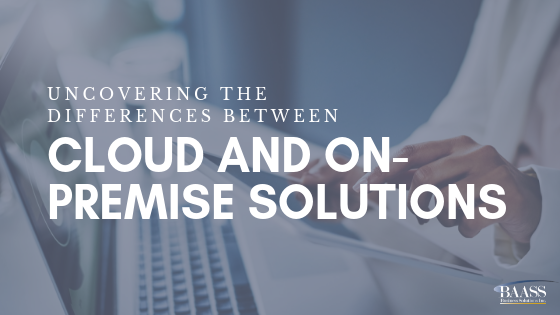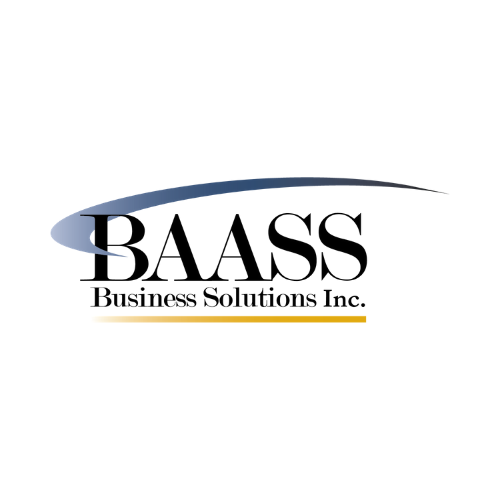
Have you thought about moving your business management software solutions to the Cloud? As more and more businesses begin to take their business processes and software to the Cloud, we have received a number of questions regarding the pros and cons of moving to the Cloud. From questions about the Cloud’s security to assumptions about its costs savings, we have fielded a number of inquiries and cleared up some common misconceptions about the Cloud and on-premise software.
Here at BAASS, we believe you should not make any business technology solution without all of the facts, so we have provided a comparative list of the key features of both Cloud and on-premise software solutions. Take a look at the most revealing differences between Cloud and on-premise technology:
- Accessibility: Cloud-based applications can be accessed directly via the Internet or any mobile device. On-premise solutions can only be accessed on the computers which they are implemented (or through remote access). Some on-premise solutions contain additional browser/mobile accessibility.
- Cost: When you purchase an on-premise solution, the majority of the cost is paid up-front in software, hardware, training, IT, implementation and support costs. Cloud-based solutions are generally subscription-based, allowing you to pay as you go. This may or may not be cheaper than your on-premise solution. For a true cost analysis, you will need to discuss your situation with a software vendor.
- Software Maintenance: All software upgrades and maintenance for Cloud-based applications are handled by the Cloud provider whereas all upgrades and maintenance for on-premise solutions are handled by your IT staff.
- Security: Both solutions provide exceptional security for your data. For on-premise solutions, all of your company data and software is stored and managed directly on-site by your business. For Cloud solutions, your data is stored and managed in the Cloud by the Cloud provider.
- Hardware: Cloud applications require no additional hardware. They only need an Internet connection. On-premise solutions require hardware and servers to run the software.
- Implementation Times: Cloud applications can be implemented more quickly than on-premise solutions, as they do not require additional hardware setup and training. While Cloud deployments certainly require time and attention, on-premise solutions require much more detailed planning (and therefore time).
- Customization: Both options are customizable; however, the Cloud is much more easily customizable than on-premise software. Customization of on-premise software are typically tied to your current deployment and can only be revisited during upgrades.
As you can see, Cloud and on-premise applications differ significantly. In order to ensure that you have made the right decision regarding your software deployment, you need to partner with a technology provider who understands your needs and the capabilities of your software.
